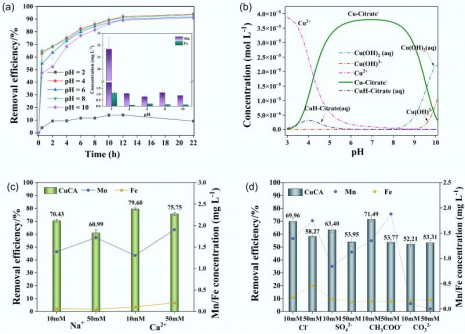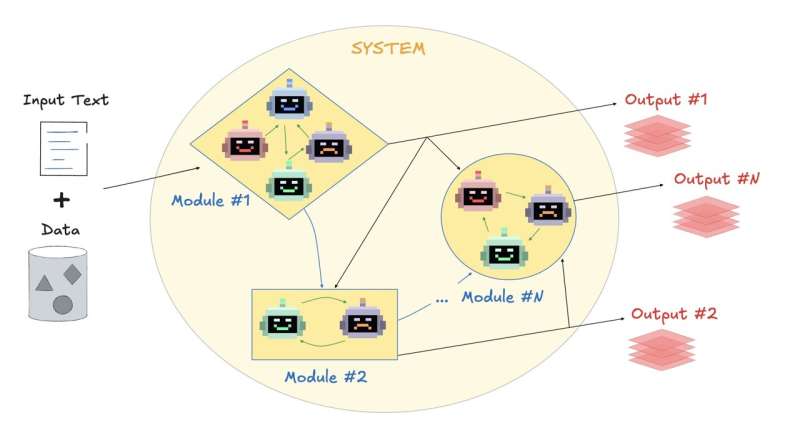A team of researchers from Beihang University has developed a new material that significantly enhances the removal of heavy metal complexes from water. The innovative product, known as ferromanganese oxide-modified biochar (FMBC-600), has demonstrated an impressive copper removal rate of 99.5% and a total organic carbon reduction of 92.6%. This breakthrough was detailed in a study published on October 14, 2025, in the journal Biochar X.
The urgency for effective wastewater treatment solutions has escalated due to growing freshwater scarcity. Conventional methods primarily target free metal ions but often overlook stable metal complexes. These complexes, commonly formed with organic agents like citric acid, are resistant to degradation, migrate easily, and pose long-term ecological and health risks. Industries such as electroplating and textile dyeing frequently encounter copper–citrate complexes in their effluents, which can be challenging to eliminate using traditional precipitation and ion exchange techniques.
The new FMBC-600 demonstrates a promising alternative. The research team, led by Wenhong Fan, synthesized this modified biochar through a combination of impregnation and high-temperature calcination. Their approach systematically characterized the material’s structure and performance in removing copper complexes from water.
Enhanced Performance Through Advanced Modification
The modification process involved coating the biochar with 100-nanometer Mn3O4 and (FeO)0.099(MnO)0.901 nanoparticles. Techniques such as field emission scanning electron microscopy (FE-SEM) showed that this modification transformed the initially smooth biochar surface into a rough texture uniformly covered with nanoparticles. Energy dispersive spectroscopy (EDS) confirmed the successful incorporation of iron and manganese, as well as the deposition of copper after the adsorption process.
Further analyses, including Fourier-transform infrared spectroscopy (FTIR) and X-ray diffraction (XRD), revealed the presence of various functional groups, as well as crystalline phases essential for the adsorption process. The study found that the optimal conditions for the highest removal efficiency were an iron-to-manganese ratio of 1:4, manganese concentration of 0.03 M, and pyrolysis temperature set at 600 °C. Under these conditions, copper removal reached 99.5%, while total organic carbon removal stood at 92.6%.
The adsorption process was notably fast, occurring within just 30 minutes, and remained effective across a pH range of 4–10. Even in the presence of competing ions such as Na+, Ca2+, Cl−, and SO42−, FMBC-600 exhibited robust performance, indicating strong selectivity and resilience against interference.
Kinetic modeling revealed that a pseudo-second-order equation fit the adsorption data, suggesting that chemisorption is the dominant mechanism. The Freundlich isotherm model demonstrated that multilayer adsorption occurs, which is enhanced at elevated temperatures.
A Sustainable Solution for Wastewater Treatment
The FMBC-600 not only displays high efficiency but also impressive stability and reusability, maintaining approximately 80% retained efficiency after two cycles of use. This material stands out as a scalable and cost-effective solution for addressing persistent metal-organic pollutants in wastewater.
The significance of this research extends beyond wastewater treatment. Its simple production process and high efficiency make it a viable option for large-scale applications in various industries, particularly those dealing with electroplating, dyeing, and chemical manufacturing. Furthermore, the technology could be adapted for soil remediation, potentially mitigating heavy metal accumulation in agricultural lands.
With its superior selectivity, stability, and reusability, FMBC-600 presents a meaningful advancement in sustainable water treatment. Its effectiveness under varying pH and ionic conditions makes it suitable for real-world applications, where water chemistry can be complex. The integration of this innovative biochar into wastewater treatment frameworks could significantly reduce metal contamination, contributing to global efforts aimed at achieving clean water and sustainability goals.
The study was supported by the National Natural Science Foundation of China and various educational research projects in the Inner Mongolia Autonomous Region. For further details, the study can be accessed via DOI: 10.48130/bchax-0025-0001.







